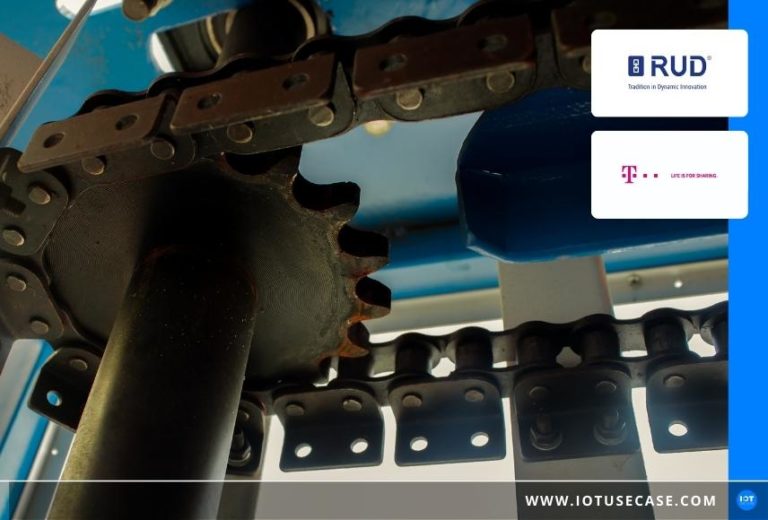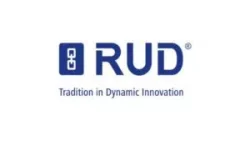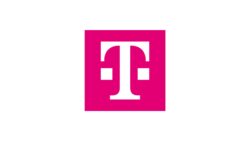The RUD Group is a specialist in conveyor and drive technology. It offers its customers chain systems consisting of precisely matched components so that diverse materials can be conveyed safely horizontally, vertically and uphill. Such conveyors are used, for example, in coal-fired power plants, where they are used for ash removal and have to withstand enormous thermal and mechanical loads. If this removal does not function properly, the power plant is at a standstill. Plant maintenance is therefore a particularly sensitive issue, because unplanned production downtimes are not only inconvenient for power plant operators, but above all expensive.
The problem: When is the right time to replace the chain?
The conveyor chain material suffers severely from the weight of the ash, heat and continuous use, and these loads are not homogeneous and therefore the plant running time varies. Until now, the right time for a precautionary chain replacement was difficult to estimate and depended on the intuition of the user. Status checks during operation were only carried out with the aid of a traffic light system directly at the production plant – a rather imprecise procedure that did not provide the operators with the desired certainty about the status. And the regular maintenance, the only thing that could provide information about wear, often came too late: the red light was already on.
The consequence was expensive production losses, which made both the power plant operator and the conveyor system supplier RUD sweat. This was because replacements had to be found quickly for the conveyor components such as deflection rollers, round steel chains and chain locks, and maintenance personnel also had to be available immediately. At some point, this reactive approach no longer seemed service-oriented enough for the RUD Group, which is why they were looking for a new maintenance approach to prevent production downtimes in advance.
The solution: IoT sensors provide more transparency of the plant status
RUD found what it was looking for with Deutsche Telekom AG, which worked with the conveyor manufacturer to develop a data-based, digital solution.
The goal was to make wear and chain runtime more predictable and transparent, which required an IIoT (Industrial Internet of Things) solution. Within three months, the partners designed a prototype, which was completed into a complete operational solution after six more months. Telekom equipped the conveyors with IIoT devices that use sensors to collect measurement data on mechanical and thermal loads, conveyor speed, etc., encrypt this data via GSM thanks to built-in SIM cards, so that it can finally be transmitted to the secure Cloud-of-Things Backend by Telekom. With the help of IIoT functions, RUD can perform analysis of the conveyor system flexibly and remotely, and the power plant operator can plan maintenance more predictively.
Recording data is important, presenting it appropriately and transporting it to users is perhaps even more important. Therefore, the customer has access to all plant data in the RUD Cockpit. Alarms can also be stored here, allowing RUD to alert its customers to conspicuous behavior patterns in real time. The customer’s personnel thus have permanent certainty about the condition of the conveyors.
Of course, the measurement data is not only provided, but also evaluated, which offers the customer further added value. Telekom provides “widgets” – small computer programs that are integrated into other programs – that perform long-term analyses and status reports, for example, on operating time, current and average load, and chain wear. These widgets contain engineering knowledge that RUD has painstakingly acquired over 140 years: a source of knowledge of immense density. The complex operating technology of conveyor systems is thus made easily accessible to the customer.
The result: Optimization of conveyors and their maintenance intervals in real time
It is obvious that maintenance intervals have been much better controlled since then. The measurement data is continuously recorded and visualized in the RUD Cockpit. This not only creates transparency, but this pinpoint service has also had a positive effect on customer relations. Acting creates more trust than reacting.
This digital innovation brought two more advantages for RUD. First, it enabled a new business model, as RUD can now also offer data analysis in addition to providing equipment, wear parts and maintenance services. And secondly, scaling is easier from now on: the innovative solution paved the way for rapid internationalization that is not tied to a specific location (the cloud makes it possible). Plants in Brazil are already connected, and a rollout in Australia is also planned. Without IIoT, all of this would have been unthinkable.






